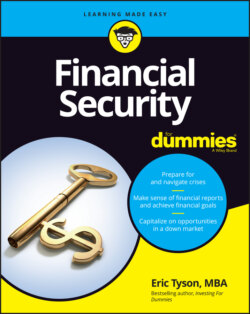Читать книгу Financial Security For Dummies - Eric Tyson - Страница 27
The Panic of 1907
ОглавлениеYou probably didn’t know or realize it at the time, but the 2008 financial crisis actually shared numerous parallels with the so-called Panic of 1907. And, the 1907 panic was similar to other financial panics, bank runs, and bank failures that came before it. Such episodes were reasonably common as the government-operated Federal Deposit Insurance Corporation (FDIC) insurance system for banks didn’t come into existence until 1933. There was also no other federal oversight or backstop for banks, like the Federal Reserve, which didn’t exist in 1907 (but came out of this crisis).
According to a Federal Reserve Bank of Boston review of the Panic of 1907 and other panics:
“Some were more severe than others, but most followed the same general pattern. The misfortunes of a prominent speculator would undermine public confidence in the financial system. Panic-stricken investors would then scramble to cut their losses. And because it wasn’t uncommon for speculators to double as bank officials, worried depositors would rush to withdraw their money from any bank associated with a troubled speculator. If a beleaguered bank couldn’t meet its depositors’ demands for cash, panic would quickly spread to other banks … many Americans suffered sudden and dramatic reversals of fortune when a panic struck. Even in a relatively mild panic, fortunes evaporated, and lives ended in ruin.”
In 1907, numerous important countries in the world’s economy had a banking crisis. Problems began in the United States. and then spread to Denmark, France, Italy, Japan, Sweden, Chile, and Mexico. Some trust companies, which were quasi-banking institutions that had reserves on hand of only 5 percent of their obligations, became insolvent when their lending to copper companies led to losses when copper prices dropped.
In April 1906, the great San Francisco earthquake squeezed insurers and caused them to liquidate large portions of their financial holdings — stocks and bonds. Also in 1906, the Interstate Commerce Commission, which was the first U.S. regulatory agency (created in 1887), began price regulations on the economically important railroads. That and the resulting collapse in railroad stock prices contributed to the financial crisis.
U.S. stock prices got hammered, dropping by nearly half (49 percent) during this tumultuous economic two-year period from early 1906 to late 1907. Trust company and bank failures continued until banker John Pierpont Morgan (whose firm today is known as J.P. Morgan) put up his own money and enlisted other prominent New York bankers to do the same. The need for a banker of “last resort” led to the creation of the Federal Reserve System and their fulfilling that need (when properly engaged) during future such events. However, the Federal Reserve made some major mistakes during the Great Depression (discussed in the next section), so the Federal Reserve was very much a work in progress in the aftermath of its creation following the Panic of 1907.
Stock prices fully recovered from the 1906–1907 period decline by mid-1909. It’s also worth noting that although the words “panic” and “crisis” are used to describe the economy and stock market of this period, the rate of the stock market decline was typical for a bear market. While the 49 percent stock market decline was among the larger bear markets, it played out over 22 months so there was really no “panic,” and the rate of decline was about 2.2 percent a month on average over the entire period.
